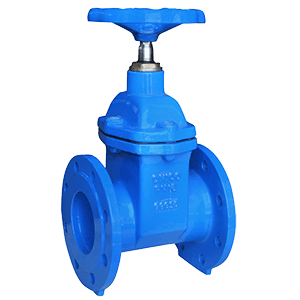Ships rely on many kinds of valves, but gate valves remain one of the most widely used types across marine pipelines. They handle isolation, shut-off, and emergency control in systems that carry seawater, fuel, oil, bilge water, ballast water, and even steam. Because conditions at sea are harsh, different gate valve designs are used to match pressure levels, corrosion risks, and space limitations. Understanding the types of marine gate valves helps shipowners, engineers, and buyers choose the right model for safety and long service life.
1. Rising Stem Gate Valve (OS&Y Type)
This is one of the most common designs found on ships. When the valve opens, the stem rises visibly. When it closes, the stem lowers. This simple movement gives the operator a clear view of the valve status. Many engineers prefer this type for critical lines because the visual indication reduces operation errors.
Where it is used: seawater pipelines, freshwater supply, engine cooling, fuel oil systems, fire lines.
Why it works well on ships: easy to maintain, reliable sealing, good for higher pressure.
2. Non-Rising Stem Gate Valve (NRS Type)
Here, the stem does not move upward. The gate moves internally instead. Since the vertical height stays constant, this type is perfect for compact spaces—something every marine engineer understands well.
Common locations: bilge lines, ballast systems, pump rooms, areas with height limits.
Key benefit: space-saving design with the same shut-off capability as OS&Y types.
3. Cast Iron Marine Gate Valve
Cast iron valves are widely used in low-pressure seawater service because they are economical and durable when protected from corrosion. They are common on many commercial and cargo vessels.
Applications: fire main systems, seawater service lines, general service pipelines.
4. Bronze Marine Gate Valve
Bronze performs exceptionally well in seawater. It resists corrosion naturally, which is why many shipbuilders still prefer it for medium-pressure lines.
Typical uses: HVAC cooling, freshwater systems, cooling water circuits, small auxiliary lines.
5. Stainless Steel Gate Valve
When higher temperatures, chemicals, or corrosive fluids are present, stainless steel becomes the best option. Grades like SS316 offer excellent resistance to seawater and aggressive media.
Used in: chemical lines, high-pressure systems, hot water, fuel systems.
6. Knife Gate Valve (for Sewage and Sludge Systems)
This valve is not exactly a traditional gate valve, but it is widely used on ships where solids or fibrous materials may appear in the medium. The sharp blade cuts through debris and prevents blockage.
Where you find it: sewage treatment units, sludge discharge, greywater systems.
7. Actuated Marine Gate Valves (Electric or Pneumatic)
Modern ships rely heavily on automation. Actuated gate valves allow remote operation from the engine control room or integrated ship automation system.
Used for: ballast tank control, emergency shut-off, fuel transfer, engine-room automation.
8. Pressure-Sealed Gate Valves
These are designed for very high-pressure or high-temperature systems.
Typical applications: steam lines, boiler systems, thermal oil systems.
Post time: Nov-19-2025

